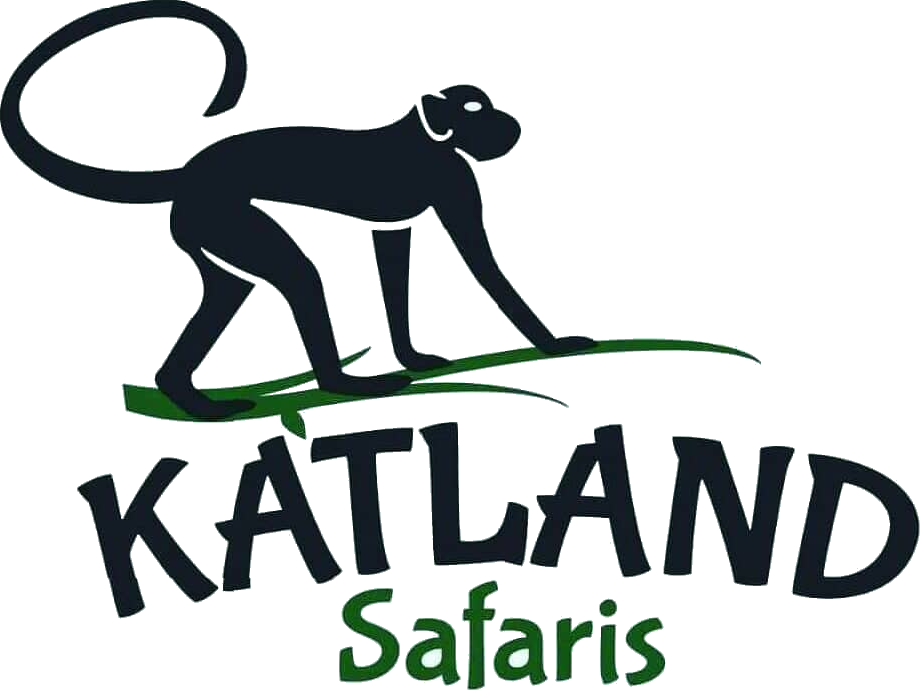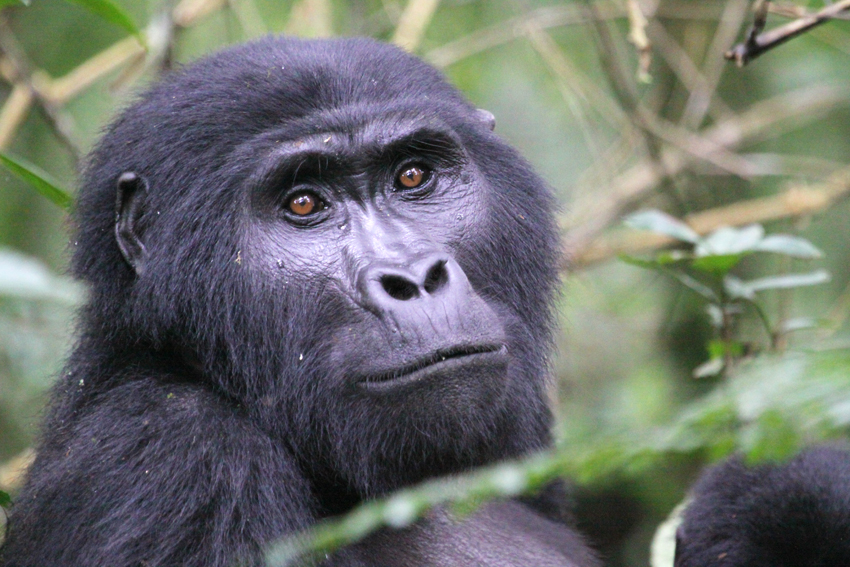7 Recommended Things To Do With Kids On Uganda Safari
A well-planned schedule with kid-friendly activities is essential when taking kids on safari in Africa, especially in Uganda. Age restrictions apply to several activities in Uganda, such as gorilla trekking, which requires participants to be at least 15 years old, chimpanzee trekking, and many more.
Uganda is a destination for ecotourism, and the country’s conservation efforts aim to promote sustainable tourism. You may introduce children to the value of wildlife protection for the growth of sustainable tourism by making reservations for a Uganda safari with them. They might be able to observe in person the wild creatures they have learned about in class. Kids can create lifelong memories on their safari vacation.
The majority of safari activities in Uganda are associated with national parks, which may require lengthy road trips. When planning an upcountry trip, you must take into account whether the children can handle the long, hilly, dusty, or slick roads.
Murchison Falls National Park, Queen Elizabeth National Park, Lake Mburo National Park, Kibale National Park, Kidepo Valley National Park, Jinja source of the Nile River and white water rafting, and Ssese Island in Lake Victoria are just a few of Uganda’s safari destinations where a family can enjoy a vacation.
Taking kids on game drives, on safari in Uganda
Uganda is home to a wide range of wild creatures that inhabit various regions of the nation. They are protected by the government in ten national parks in Uganda. You may drive along the tracks of the park of your choosing in the early morning with the kids.
Elephant herds, giraffes, waterbucks, bushbucks, Uganda Kobs, zebras, warthogs, cheetahs, lions, aardwolf leopards, hartebeest, rhinos, and more are among the creatures you might be able to see. While some creatures are common to a given park, not all animals may be found there.
For the kids, it’s nice to rent a car with enough window seats for all of them or a porch or pop-up roof for additional viewing. For their protection, make sure no youngster puts their arm or leg outside the car window. Because of the predators in the woods, the brief phone breaks during the game drives might not be feasible.
All safari participants should be instructed to speak quietly to avoid frightening away the wild animals for the optimum wildlife viewing experience. Game drives are a chance activity, but unfamiliar noise drives some of these animals into hiding, making it impossible to view them.
A Family Boat Trip Safari in Uganda
Boat rides are among the most breathtaking parts of Uganda safaris to parks like Queen Elizabeth National Park and Murchison Falls National Park. You may observe wildlife feeding from the Kazinga Channel’s coasts or the banks of the river when the children are around.
Additionally, a variety of birds find refuge on the marshy banks, which kids may be able to recognize if they know anything about them.
On a clear day, the rushing River Nile can squeeze through a tiny curve, break out, and cascade a 43-meter-high cliff, forming a rainbow right in front of your eyes during the Murchison Falls National Park Boat excursion. Enjoying this moment as a family is just amazing.
On a clear day, you might be able to view the snowcapped Rwenzori Mountain on the Kazinga Channel Boat tour. Children learn about many landforms in school, and they may observe the Rift Valley, the Rwenzori mountain, and other features while on a safari in Queen Elizabeth National Park.
While there are opportunities to hire a private boat on a Uganda Safari, the Uganda Wildlife Authority also offers certain public boat trip arrangements.
Because the boat tour has large Nile Crocodiles, hippos, and vipers, make sure you keep a tight eye on the kids to protect them from falling into the water.
Children’s Gorilla Trekking on a Safari in Uganda
Although gorilla trekking requires participants to be at least 15 years old, children as young as 15 are still regarded as juveniles in Uganda, where the legal adult age is 18. For the youngsters, you must have a gorilla trekking permit, which presently costs $800 per person per day.
The only gorilla trekking locations in Uganda are Mgahinga National Park and Bwindi Impenetrable National Park.
Make sure you get ready for gorilla trekking ahead of time by purchasing the appropriate equipment, doing some physicals to stay in shape for the climbs and lengthy forest excursions, and educating the participants on what to do and anticipate when gorilla trekking. This is to help them mentally get ready for this thrilling safari that involves gorilla trekking.
It takes an undetermined amount of time to undertake gorilla trekking, which calls for stamina and patience, particularly when you have to go upwards to find the mountain gorillas. The discipline required for gorilla trekking is also different; to avoid appearing suspicious, you must maintain your composure in front of the gorillas.
Children are excited by the other adorable primates in the woods, such as the grey-cheeked mangabey, vervet monkeys, red-tailed monkeys, and black and white colobus, but they must learn to restrain their desires.
15-year-olds have strong opinions about what should be done, so go over the entire strategy with them. To give children a sense of involvement, include them in the planning of an African adventure vacation.
Ugandan Chimpanzee Trekking With Children
Chimpanzee trekking in Uganda requires participants to be at least 15 years old. If you want to go chimpanzee trekking with children, you should think about getting them a chimpanzee trekking permit.
In the animal kingdom, chimpanzees are the closest cousins to humans. Their DNA is almost 98% that of humans. They reside in groups that are governed by an alpha male. Although they are mostly vegetarians, they could eat monkeys during times of famine.
The terrain of the chimpanzee habitats is very flat, in contrast to gorilla trekking, where you could ascend the slopes. You must be clear of contagious illnesses that can infect chimpanzees, such as the flu and the coronavirus.
Kibale National Park, Kaniyo Pabidi in Murchison Falls National Park, Kyambura Gorge in Queen Elizabeth National Park, Ngamba Chimpanzee Sanctuary in Lake Victoria, and other locations are among the chimpanzee trekking sites in Uganda.
While parents go chimpanzee trekking, children under 15 can participate in children’s environmental activities at Kibale National Park. To recognize monkeys, birds, trees, butterflies, and other creatures, they engage in activities such as taking quick excursions in the forest. They engage in activities such as batik creation, cyanotype photography, and pond dipping that teach kids about animals.
Children may see what chimps do in the wild by visiting Ngamba Chimpanzee Sanctuary Island in Koome, where they might not be permitted to go due to age. You need a boat to travel to the island. When you arrive, you may assist with caring for the chimpanzee, feeding it from the guest platform, and much more.
These chimpanzees were saved from captivity, particularly from poachers, traffickers, and other individuals who had been left behind by their families but were unable to reintegrate into society.
Ugandan Family Visit to Ssese Island | Things To Do With Kids On Uganda Safari
The peaceful Ssese Island in Lake Victoria is a great place for your family to spend quality time together without any outside interruption. You must reserve a ferry, private boat, or charter in order to get there.
Among the activities available on this island are swimming in the crystal-clear ocean, beach walks, guided nature walks in the forest, visits to the fishing village, and tours of the palm tour gardens and factories.
Rafting on the white water and the Nile River’s source
Family-friendly white water rafting on the Nile is an exciting experience. Instructors are on the ground to walk you through all the essential processes, so you don’t need any prior expertise. There are safety devices to keep you from sinking. All you have to do is keep selling and relish the moment. It’s an excursion to strengthen family ties.
If you’re not interested, you may float on the Nile or go kayaking. Although it’s an exhilarating journey, those with courage should give it a shot.
See the source of the Nile, where the water from the river abruptly splits off from the water from Lake Victoria and flows on to Egypt, where it empties into the Mediterranean Sea. It is up to you and your family to decide where to halt because different areas of Itanda Falls have varying tidal levels.
Entebbe, Uganda Wildlife Education Center | Things To Do With Kids On Uganda Safari
Uganda’s pride in its wildlife is summed up by the Uganda Wildlife Education Center (UWEC), formerly known as the Entebbe Zoo. Instead of being housed in cages, wild animals are housed in exhibitions that mimic their natural habitat.
You can follow the paths made in the center or take a guided stroll through it. Youngsters can observe chimpanzees that they may not have been permitted to see in the wild.
As suggested by the center’s officials, family members can reserve a hippo up close or care for the day.
Chimpanzees, lions, cheetahs, waterbucks, elephants, rhinos, leopards, a variety of birds, including shoebills and parrots, zebras, vipers, crocodiles, ostriches, giraffes, and many more may be seen at the facility.
Things to Bring on a Safari in Uganda with Children | Things To Do With Kids On Uganda Safari
Make sure to pack minimally yet appropriately, particularly if you are going on safari with kids. Due to their mood swings, parents typically find it difficult to travel with their kids. When packing the luggage to be used in the woods away from their normal surroundings, just make sure to be exact and on point.
Safari clothing that is suited to the environment, such as tan or Khaki. You might get stung by stinging insects like Tsetse flies if you wear colors like blue, white, or black.
To prevent stinging insects in the wild, use insect repellent.
A first aid bag in case someone becomes ill or is hurt while on safari
Energy bits are a great snack, especially during activities, as kids grow hungry quickly, become irritable, and may even bother you.
Use sunscreen to protect your body from sunburns, especially when lounging by the pool.
In the jungle, you may shield your head from buzzing insects by wearing safari folding hats over your hair.
A camera to record memorable safari experiences that the family may look back on when they return home. Safari is a once-in-a-lifetime opportunity to create family memories.
It’s really cold at night and in the early morning while you’re at the park, so you should wear pajamas.
A small amount of actual money to buy personal goods.
Wearing flip-flops and safari boots will shield your feet from invading insects.
A poncho or sweatshirt to keep you warm on late-night or early-morning game drives.
Despite the fact that most lodges supply toiletries, it is recommended to use the ones that you are most comfortable with in order to prevent skin issues.
A lightweight bag to hold your things, especially any items the kids might need when you’re out in the woods and not at the lodge.
A charger and travel adaptor in case your devices need to be recharged.
A computer or tablet loaded with safari games will occupy the kids while you attend events in which they are not permitted to take part.
A pair of binoculars to see some of the far-flung sights in the forest, such as chimpanzees, birds, and monkeys that hide atop trees, particularly during periods of intense precipitation.
Safari footwear, particularly suitable for activities like woodland excursions, chimpanzee trekking, and gorilla trekking in Uganda. They ought to be cozy enough to carry you through the woods.


